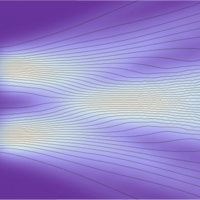- Nov 30, 2011
- 6,638
- 65,023
- 793
- Twitter Username
- @Veronicachaos
- Tumblr Username
- Veronicachaos
- MFC Username
- Veronicachaos
So, I've been reading this book called Alice in Quantumland, trying to wrap my head around this Quantum Mechanics thing that I previously only understood in a very basic conceptual manner. I also realized I was flooding Model's Only with quantum babbling and thought this might be a more appropriate place. 
What I specifically am intrigued by is the many-universes theory. To paraquote the book:
Now, if the reality an individual lives in is simply the experience of one probability out of all probabilities, what does that mean about the consciousness of others within that probability? How can multiple unique consciousnesses share a probability that only one consciousness creates?
Or is this a silly question because part of the notion that every probability exists would automatically account for all the observations that create them? You don't only exist in the reality of your own observation but also in others as well. Would that mean by simply existing and observing other's consciousness that you somehow create them?
I might be jumping the gun since I haven't finished the book yet, but I'm enjoying the questions it's been raising. Would love to hear other's thoughts on the matter.
What I specifically am intrigued by is the many-universes theory. To paraquote the book:
[Quantum rules] apply to the whole world, to everything. There is no limit to the superposition of states (Quantum superposition is a fundamental principle of quantum mechanics that holds a physical system—such as an electron—exists partly in all its particular theoretically possible states simultaneously; but when measured or observed, it gives a result corresponding to only one of the possible configurations). When an observer looks at a superposition of quantum states you would expect him or her to see all of the effects that are appropriate to the selection of states present. This is what does happen; one observer does see all the results, or rather the observer also is in a superposition of different states, and each state of the observer has seen the result that goes with one of the states. Each state is simply extended to include the observer in the act of seeing that particular state.
Now, if the reality an individual lives in is simply the experience of one probability out of all probabilities, what does that mean about the consciousness of others within that probability? How can multiple unique consciousnesses share a probability that only one consciousness creates?
Or is this a silly question because part of the notion that every probability exists would automatically account for all the observations that create them? You don't only exist in the reality of your own observation but also in others as well. Would that mean by simply existing and observing other's consciousness that you somehow create them?
I might be jumping the gun since I haven't finished the book yet, but I'm enjoying the questions it's been raising. Would love to hear other's thoughts on the matter.




